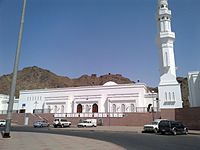
Photo from wikipedia
What is AUDA? Landry Signé’s new book: African Development, African Transformation: How Institutions Shape Development Strategy focuses on the African Union Development Agency, an organization that came into being in… Click to show full abstract
What is AUDA? Landry Signé’s new book: African Development, African Transformation: How Institutions Shape Development Strategy focuses on the African Union Development Agency, an organization that came into being in July of 2018 as the successor organization to the New Partnership for Africa’s Development (NEPAD). It is new enough to lack its own Wikipedia entry at the time of writing. Signé’s book is an account of how AUDA came into being and also about what AUDA might mean for future political developments in Africa. NEPAD, the predecessor toAUDA, had a somewhat tense relationship with the African Union (AU); it was felt to be too much the initiative of the South African government and too closely aligned with the sorts of neoliberal economic policies promoted by theWorld Bank and the IMF. AUDA appears to be more firmly placed within the architecture of the AU. In this way it signifies something new. At the same time, Signé’s line of argument is sceptical of broader claims for the distinctiveness of AUDA, and he questions the space for innovation “within a highly structured institutional context” (152). Early parts of the book reference scholarship on African development. This offers a broad framework for understandingAUDA’s emergence and for thinking about its possible future. Signé first draws a distinction between “activist” and “analytical” approaches, before then dividing the analytical camp further into the following groups: liberal/neoliberal, neo-Marxist, and historical (Introduction and Chapter One). Later parts of the book look at the structural adjustment programmes of the 1980s and AUDA’s emergence in the 1990s and 2000s (Chapters Two andThree). Signé then asks how much AUDA represents real change (Chapter Four) before outlining the institutional architecture of the agency (Chapter Five). Chapter Six asks who will pay for AUDA. Chapter Seven looks toward the role AUDAmight play in the UN's Sustainable Development Goals and the African Union's Agenda 2063, frameworks that aim to promote prosperity while protecting the planet.
Journal Title: African Studies Review
Year Published: 2020
Link to full text (if available)
Share on Social Media: Sign Up to like & get
recommendations!